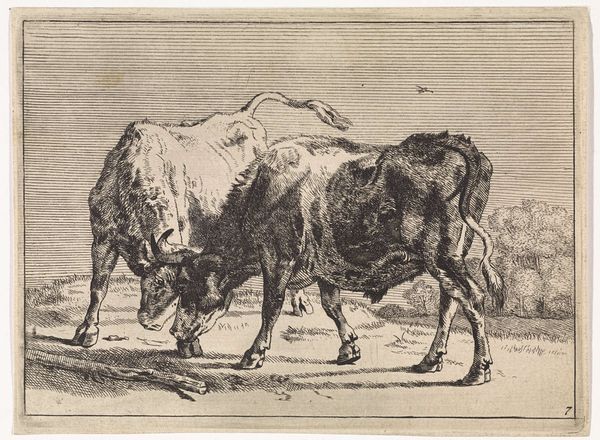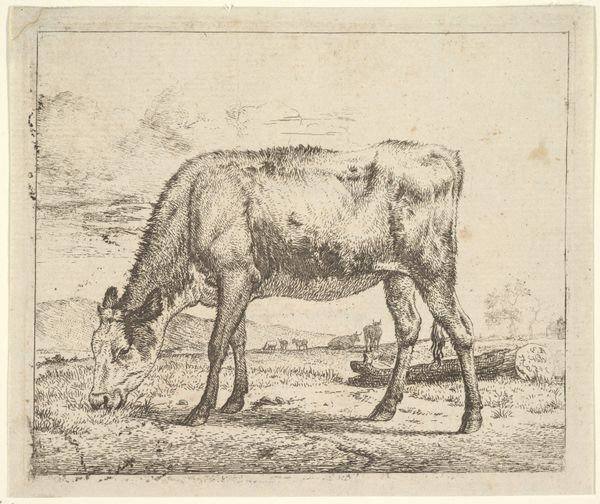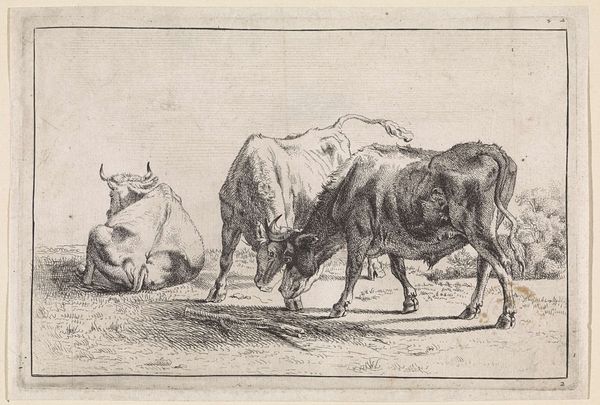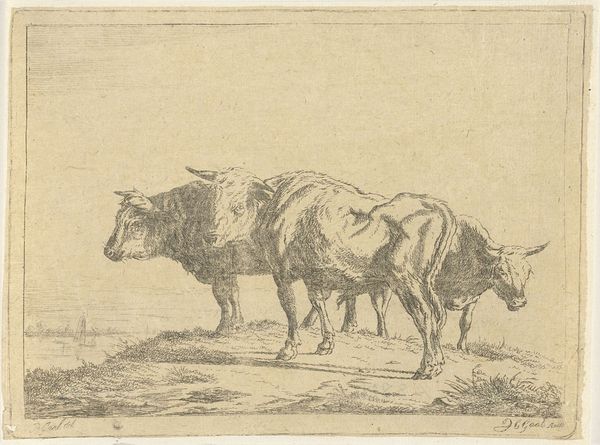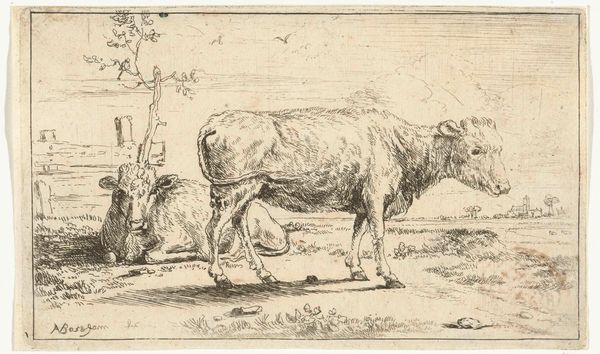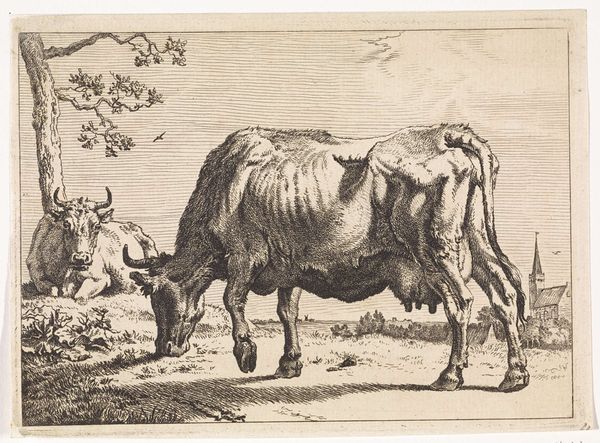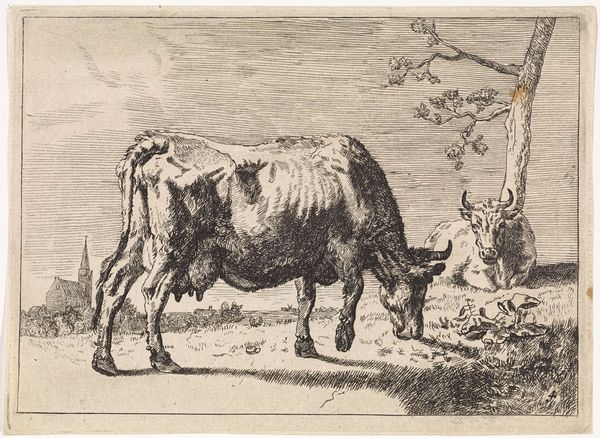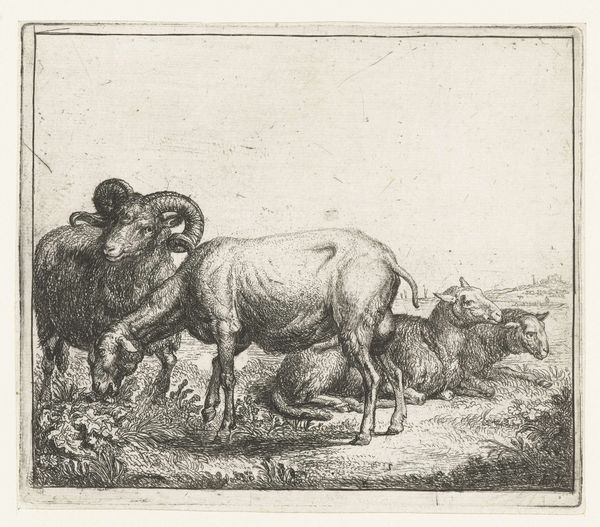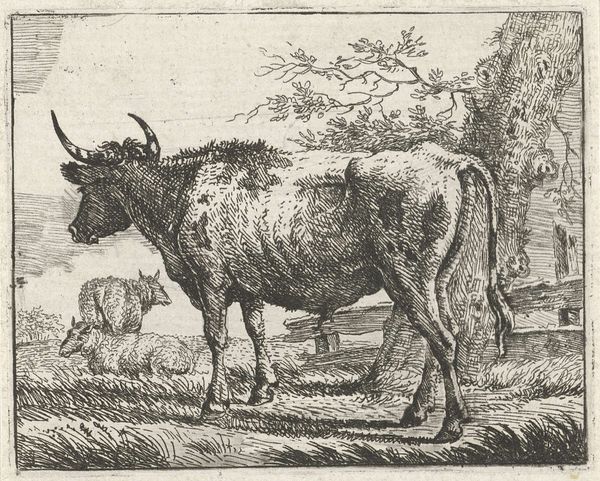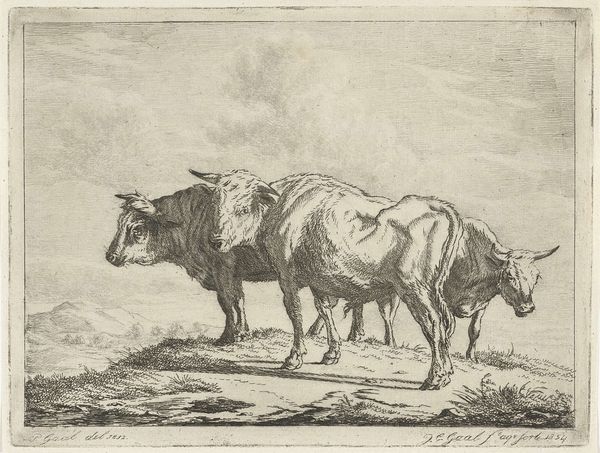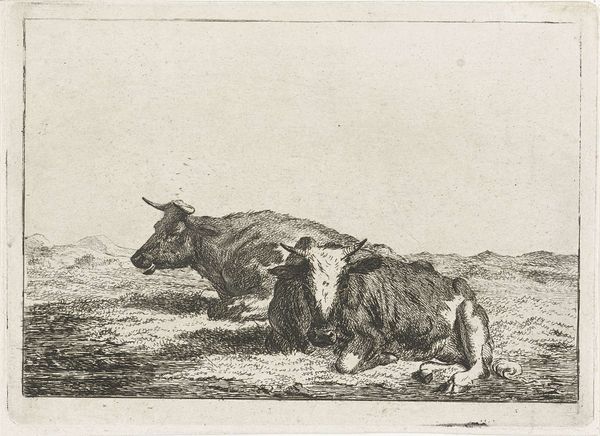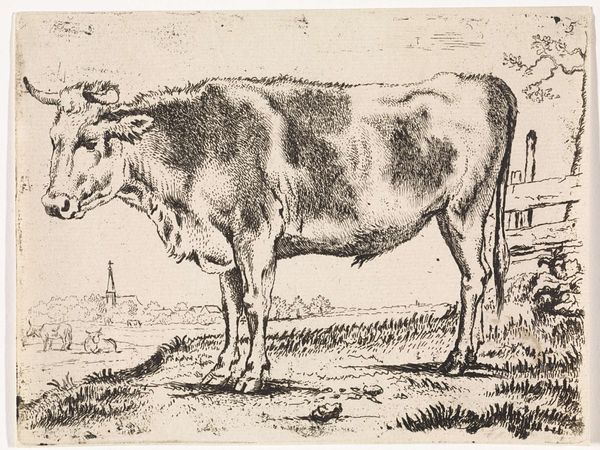
drawing, print, etching, paper
#
drawing
#
animal
#
dutch-golden-age
# print
#
etching
#
landscape
#
paper
#
genre-painting
#
realism
Dimensions: 105 × 141 mm (sheet)
Copyright: Public Domain
Curator: Oh, isn’t that something? You get the sense these two are having a serious disagreement! Editor: Indeed. What we're looking at is a print titled "Two Bulls Fighting," etched by Paulus Potter during the Dutch Golden Age. There's a tension, a charged energy within the lines of the drawing itself. I imagine this was not simply documentation. Curator: Absolutely. I find a rough sort of beauty here, the starkness of the scene almost poetic. It is more of a dance, even with the apparent aggression; this really captures a powerful moment in time. You almost hear their huffs and the pounding of their hooves, I mean, really raw primal power that sends chills down your spine! It reminds me of every argument I’ve ever had… all energy, passion, stubbornness, and then a grudging respect once the dust settles. Editor: The realism, while typical of Potter's style, also speaks volumes about the period. The Dutch Golden Age witnessed a burgeoning mercantile class eager to see the natural world, particularly agricultural life, depicted with scientific accuracy. The fighting bulls become, in a sense, a mirror reflecting society’s concerns with land ownership, competition, and even a certain romanticization of rural life juxtaposed against urban expansion. Curator: It is so visceral! Potter renders these massive animals in a such detail, their muscles flexed and ready. The texture in this work— the paper feels almost soft to the touch even when it isn’t! Editor: The piece offers layers to dissect— gendered symbolism is something else to chew on, isn't it? The bull, a classic symbol of masculinity and virility, here locked in a power struggle. There is almost a sort of violent ballet of dominance happening, one very performative. The way these fights mimic the way gender and patriarchal power present themselves... Curator: Yes, and maybe we could even question the performativity inherent in depictions of masculinity itself, then and now. It’s more than just bulls locking horns; it is something universal. This speaks of primal forces still with us. Editor: Definitely, a small print with huge resonance and a complexity that asks us questions that go far beyond the pastoral.
Comments
No comments
Be the first to comment and join the conversation on the ultimate creative platform.
